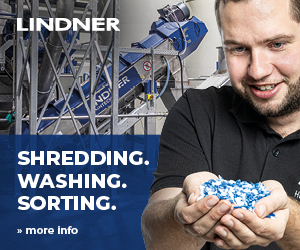Growth of the plastics recycling industry seems to have always been blighted by the proverbial “chicken or egg” situation. Do you build more recycling capacity first, or wait until there is sufficient supply to fill that new capacity? Should you collect a new material if no market exists? How do you raise capital for a new facility with no current outlet for its products?
Clearly, it is unwise from a financial perspective to invest in new technology to improve material quality when market signals and demands are not showing you could get the desired return on investment. Fortunately, there are more and more situations where the forces of supply and demand align, but this is only occurring at an incremental rate. More often than not, the imbalance of these forces has delayed growth of new collection and recycling capacity. How can we overcome this challenge?
Challenges to plastic recycling

Kaley Cross
Innovations, particularly ones that create a seismic shift in a system, such as the ones needed in plastics collection, recycling and manufacturing, can be difficult to scale for a number of reasons. Recycled plastic needs to transition from a niche material to a primary feedstock for plastics manufacturing. The ecology of the plastics industry must change to embrace the recycling industry as a standard part of the supply chain. To achieve that, sufficient volumes and quality need to be achieved for recycled plastic, and we need to scale product volumes and quality quickly.
Can we draw upon experiences from other industries that overcame these challenges and fast-track the evolution of a massive industry? GreenBlue and rePurpose Global believe we can.
Plastic credits are one tool that shows promise, and they look a bit like renewable energy credits (RECs), which have successfully supported the development of the renewable energy industry. Plastic credits are a voluntary mechanism for companies to finance infrastructure development needed for the removal, collection and recycling of plastic.
Historically, companies have used credit- and certificate-trading systems to help meet sustainability commitments in situations where individual actors have limited ability to achieve the desired goal.
The design of plastic credit systems, such as rePurpose Global’s Plastic Credit Protocol, applies the learnings from other credit markets, such as RECs and carbon credits, to avoid many of the shortcomings that have held these back. For example, well-designed plastic credit programs increase visibility of the social and environmental impact of the projects they support. Also, the plastic packaging portfolio of the brand partner is also linked directly to the types of impact projects they are eligible to support.

Laura Thompson
The development of plastic credit systems that aim to provide project financing and channel corporate investments into solving the “chicken or the egg” problem is essential. By creating a new environmental commodity, we build the infrastructure that is needed to collect and recycle plastic material and reduce the current supply and demand imbalance.
How credits work
Historically, companies have used credit- and certificate-trading systems to help meet sustainability commitments in situations where individual actors have limited ability to achieve the desired goal.
Let’s take the example of a company that has a manufacturing facility tied to an energy grid powered by coal. The company is unlikely to have the resources to switch where they get their power from, so how can they meet their green energy goals? A solution becomes the purchase of credits from a green energy producer that has generated green energy and sold the green energy claim separately from that unit of energy. With no associated environmental attribute on that unit of energy now, the end user of the power cannot make any green energy claims, so it is not double-counted.
By separating the environmental attribute, it can be sold to a consumer that otherwise has no ability to access green energy. In order to continue to produce RECs, that green energy producer needs to continue to invest in new capacity. The credits continue to grow the share of green energy, providing the necessary finance to scale it, with the goal of reaching the tipping point where no further market interventions are necessary.
Now let’s consider an example of plastic credits in action. Consider a packaged food product company that has committed to incorporating 30% PCR content into their packaging portfolio. However, no supply of PCR is available that meets the specifications for their product line of chips, for example. How can this company meet their PCR goals when suitable feedstock for recycled plastic for chip bags is not available? A solution is to purchase credits from a verified provider that invests in the infrastructure for plastic collection and recycling, in order to help the company achieve their PCR commitments in the future. The final goal is for the company to reduce their overall use of virgin plastic in their packaging portfolio.
Plastic credits contribute to new collection and recycling capacity, and fund innovations to increase plastic recovery. By applying principles of additionality, project investments (through credits) open new channels for collection and recycling that were not previously available in the project region.
Accountability, measurability and verifiability of plastic credits is key. For projects generating plastic credits, rePurpose Global mandates that the recycler and/or co-processor issues a certificate of waste recycled and/or co-processed with transport shipment and weight details, ensuring credits are traceable and not double-counted. For the Recycled Material Standard (RMS) program from GreenBlue, this is done through on-site audits and material tracking of recyclers generating Attributes of Recycled Content (ARCs), the RMS version of a plastic credit.
Plastic credits contribute to new collection and recycling capacity, funding innovations to increase plastic recovery.
Use of plastic credits
Plastic credits enable brands to bridge the gap between their current realities and their plastic commitments.
Brands that use plastic credits should have a publicly stated goal for the reduction of virgin plastic and use of recycled materials. Internally, this should translate into targets for different aspects of the business, such as procurement, research and development, and product development. If those areas are not seeing progress toward the plastic packaging goals, for demonstrable reasons, plastic credits could be used to invest in immediate action that would help the system evolve more quickly.
Further, the purchase of plastic credits should support the collection and recycling of similar material types used in the company’s product portfolio. A company that makes PET water bottles, for instance, should not use plastic credits developed from the collection of HDPE to achieve their goals. To kick-start recycling, the demand must match the investment in the resin being recycled.
In addition to meeting internal corporate goals around plastic packaging, plastics credits should be further explored as a means to achieve compliance with packaging standards. Meeting new regulations that mandate minimum levels of PCR in packaging is likely to be difficult for brands, because the volume and quality of PCR supply are unlikely to match heightened demand.
If a company can prove sufficient supply is unavailable, credits could serve as a “market of last resort,” with end users purchasing credits that match the amount of recycled plastics they have not been able to procure. Similarly, for brands aiming to reach plastic-reduction goals, a packaging solution may not yet be available for the brand’s products. Credits would represent immediate, meaningful action that brands can take to fund the innovations and systems needed for the brands to achieve their objectives.
Where credits go from here
The global pursuit to meaningfully advance plastic recycling is still in its early stages, and we need all of the tools available to drive the changes necessary for brands to achieve their 2025 and 2030 plastic packaging goals. If we look back to the early stages of green energy development, being more reliant on renewable energy than on fossil fuels seemed a long way out of reach. But today we see a clear pathway to achieving that goal, and states such as Oregon and New York have recently made commitments to 100% clean power by 2040. RECs played a role in capitalizing the projects that will make this shift a reality.
We believe plastic credits can be effective in helping to create the seismic shift needed in plastics manufacturing, where more recycled materials are used than virgin plastics.
To explore how plastic credits fit into environmental, social and governance (ESG) planning and New Plastics Economy commitments, join us for a webinar 1 p.m. Eastern on Nov. 4 in which we will demonstrate how to choose the credits that meet your needs, and how to participate in these markets.
Kaley Cross is the sustainability strategy manager at public benefit corporation rePurpose Global, and Laura Thompson is the RMS program director at the Sustainable Packaging Coalition, a program of nonprofit GreenBlue. Cross can be reached at [email protected] and Thompson can be reached at [email protected].
The views and opinions expressed are those of the author and do not imply endorsement by Resource Recycling, Inc. If you have a subject you wish to cover in an op-ed, please send a short proposal to [email protected] for consideration.
More stories about industry groups
- Colorado approval signals path forward for PRO choice
- Brand owners lead initiative for scalable film, flex recycling
- APR, ReMA update bale specs for PE rigids, film



